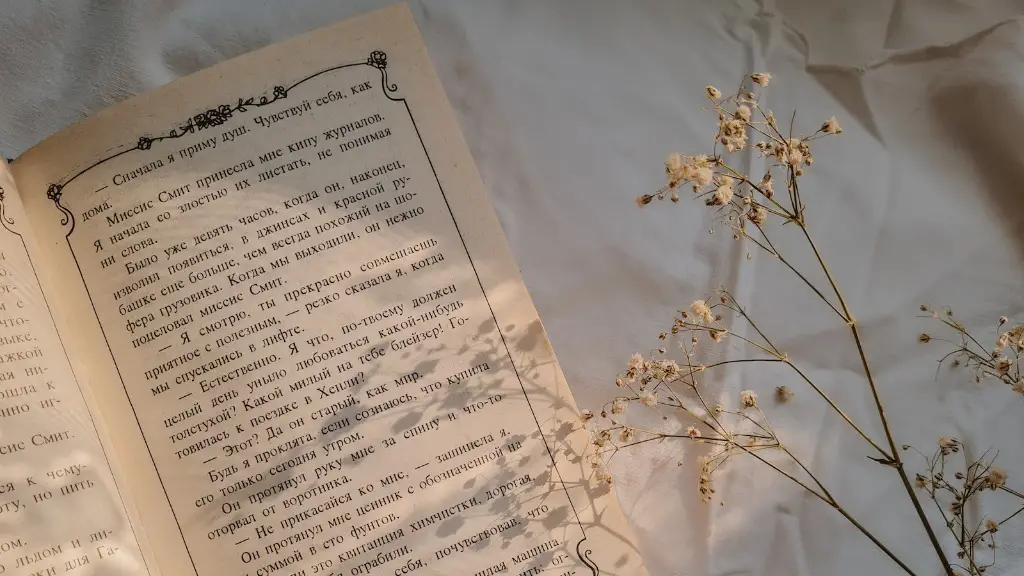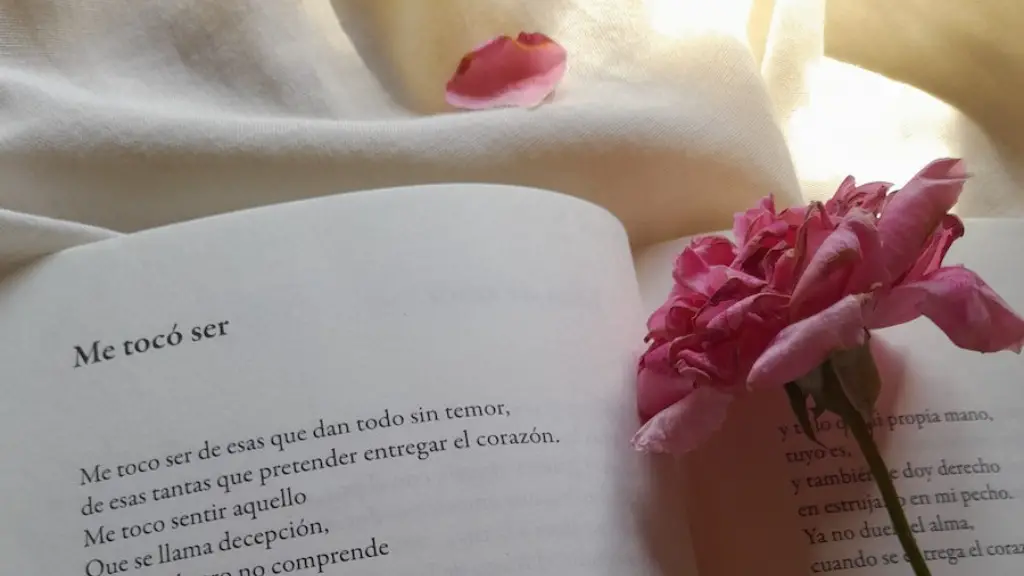Definitions of Poetry
Poetry is one of the most expressive and diverse forms of creative expression. It is defined by Merriam-Webster as a form of literature that “expresses ideas, feelings, or emotions in a most imaginative and beautiful language, usually in the form of lyrical verse”. Moreover, different types of poetry can be written using various formats, techniques, and styles.
Basic Aspects of Poetry
The basic aspects of poetry include ideas, feelings, tone, subject, language, imagery, and more. Ideas are the writer’s thought-out concepts, containing some level of reflection. They are conveyed through symbols and themes, often given from the writer’s unique point of view. Feelings are an essential part of poetry and are what make it such an expressive form. The writer often expresses their emotion in the deepest and most beautiful way. Moreover, tone is the feeling the writer wants to communicate, whether positive or negative, joyous or serious.
Subject is a very important aspect of poetry and will vary depending on the writer. It includes the themes and issues that are explored in the poem. Language is an essential element of poetry and is usually creative and even unorthodox compared to the traditional rules of grammar. Furthermore, imagery is the use of figurative language such as simile, metaphor, and allusion to create vivid images and evoke strong emotions in the reader.
Types of Poetry
There are various types of poetry and forms, including sonnets, haikus, odes, and more. A sonnets is a 14-line poem usually written in iambic pentameter that has a certain structure and rhyme scheme. A haiku is a three-line Japanese poem with 17 syllables total, arranged in three lines with five syllables in the first line, seven in the second, and five in the third. An ode is traditionally a longer, lyrical poem often written in the form of praise for something or someone.
Writing Techniques in Poetry
Writing techniques in poetry involve various tactics and strategies used by the poet to communicate their ideas in the most creative and powerful way. These techniques include the use of imagery, metaphor, simile, alliteration, assonance, among others. Imagery, for example, is the use of figurative language to create vivid images in the reader’s mind. Similes compare two things using the word ‘like’ or ‘as’ and are used to create vivid images and help the reader to engage with the subject more deeply. Alliteration is the repetition of similar sounds at the beginning of words and is used to create a rhythm and mood, as well as emphasize certain words.
Forms of Poetry
Forms of poetry, such as free verse and haiku, are used to create the desired effect in the poem. Free verse is a form of poetry that is usually written in an informal and unstructured format. It does not have to follow any set criteria, such as a set rhyme scheme or meter, but it is still considered poetry. Haiku is a traditional form of poetry that is rooted in Japanese culture and consists of three lines of five, seven, and five syllables respectively.
Power of Poetry
The power of poetry lies in its ability to express deep emotions, thoughts, and feelings. Poetry is a form of creative expression that can be used to express difficult emotions, convey important messages, and inspire people. It is a way for writers to express their innermost thoughts and feelings in a unique way. Many believe that poetry can be a powerful tool for healing, coping with difficult emotions, and connecting with one’s inner self.
Publishing Poetry
Poets have the option to self-publish their work, submit poems to literary magazines, or pursue traditional publishing avenues, such as their local university press. Self-publishing allows poets to get their work out into the world quickly and easily. Submitting to literary magazines offers poets exposure to large audiences, as well as valuable feedback that can be used to develop their craft. Finally, traditional publishing provides poets with access to resources and exposure to larger audiences.
Social Influence of Poetry
Poetry has a long history of being a powerful and influential form of creative expression. It has the power to bring people together, inspire, and create social change. Poetry has been used as a form of protest and expression of dissent, as well as a source of motivation and inspiration. Moreover, poets have been instrumental in the progress towards social justice and equality worldwide, by voicing their stories and experiences in a safe and powerful way.
Evolution of Poetry
Poetry has evolved over the years from its original roots of oral storytelling to its current form of being an expressive written form of art. Poets have explored different forms, styles, and techniques in order to create unique pieces of poetry. Poets have also felt free to break the rules and be unconventional in their writing, creating even more layers of depth and meaning for the reader to explore.
Contemporary Poetry
Modern poets use various forms of expression, such as spoken word and hip hop. These forms of poetry provide a platform for individuals to share their stories and experiences, while also engaging in creative expression. The rise of platforms such as Twitter has also added a new layer to the world of contemporary poetry, with many poets taking to the platform to share their work and connect with other poets.
Psychological and Physical Benefits of Poetry
Research has found that creative expression and the use of poetry can offer psychological and physical benefits. The creative act of writing a poem can decrease stress and anxiety, while allowing the writer to explore their thoughts and feelings more deeply. As a result, this can create positive changes in behavior and reduce symptoms of depression. Additionally, the physical act of writing can improve fine motor skills and handwriting ability.
Creative Possibilities of Poetry
The creative possibilities for writing a poem are vast and varied. Poets have the potential to explore different forms, styles, and techniques in order to create their unique work. They can use figurative language, different patterns of rhyme, and even objects, colors, and smells in order to create a multidimensional poem. Ultimately, the creative possibilities of poetry are limited only by the imagination of the writer.



